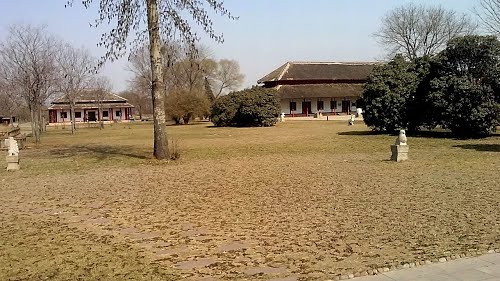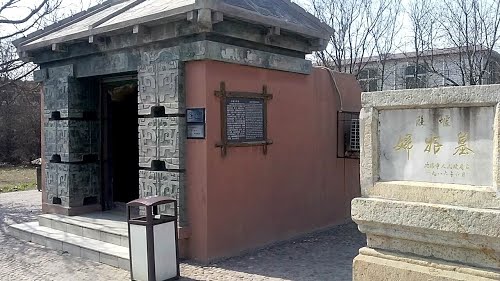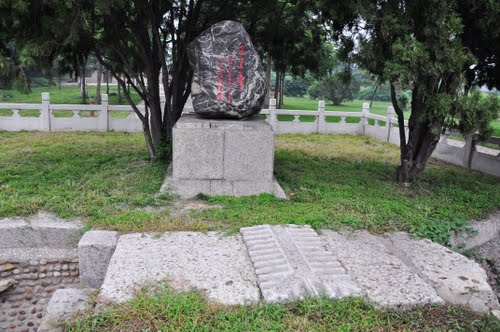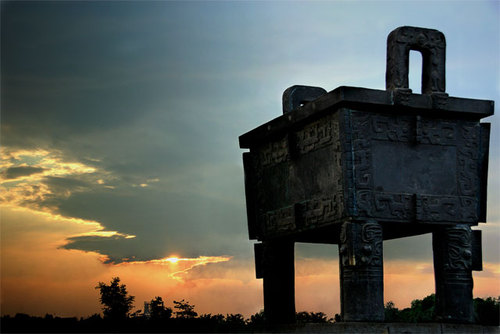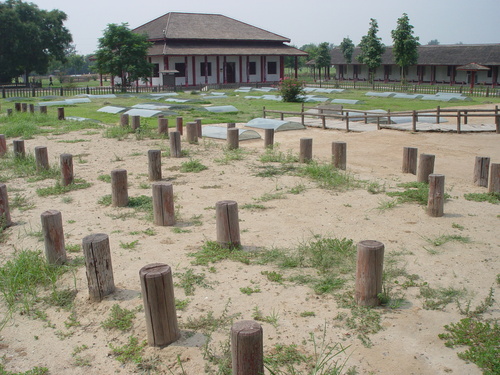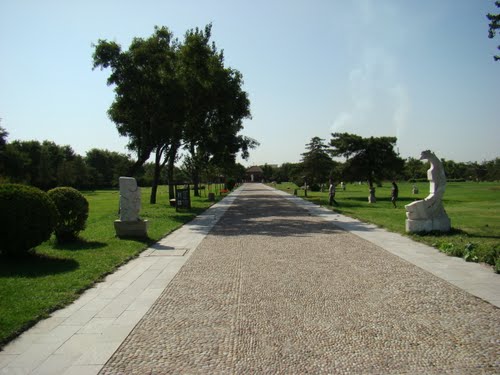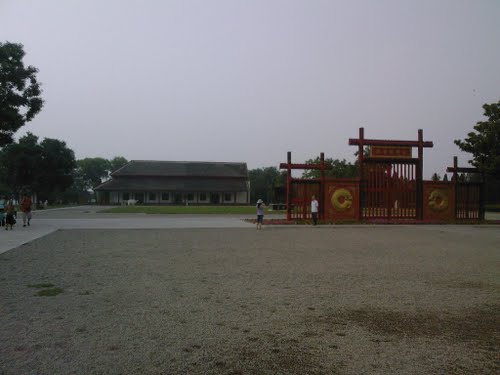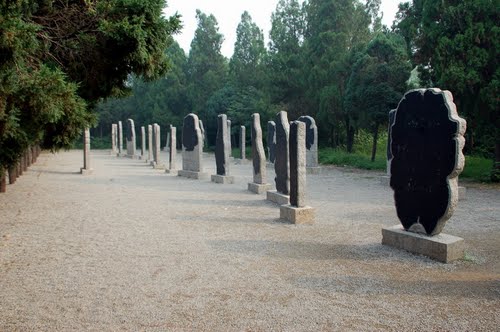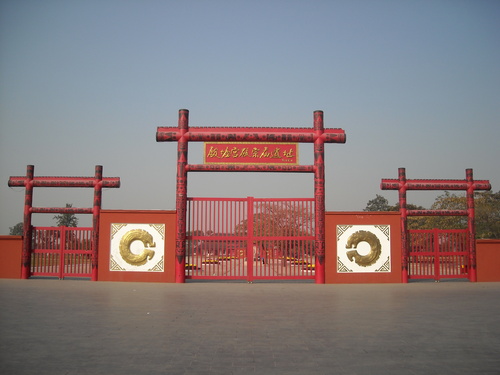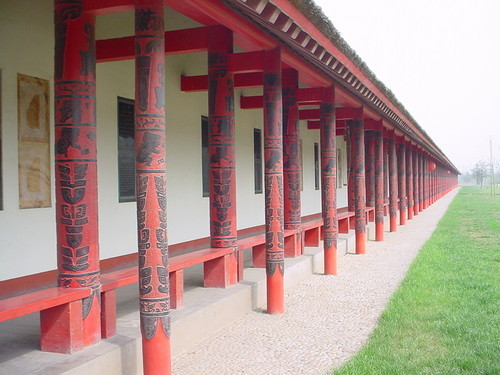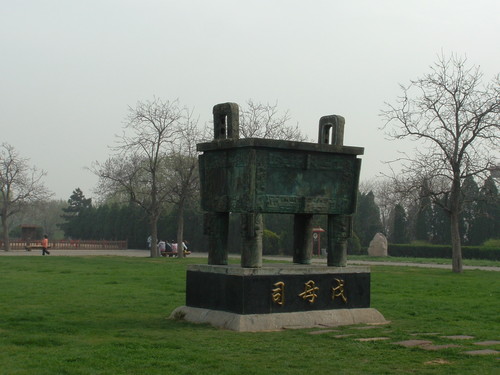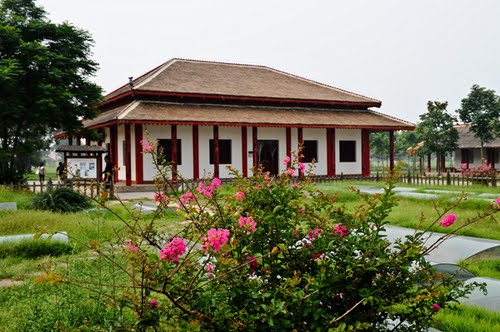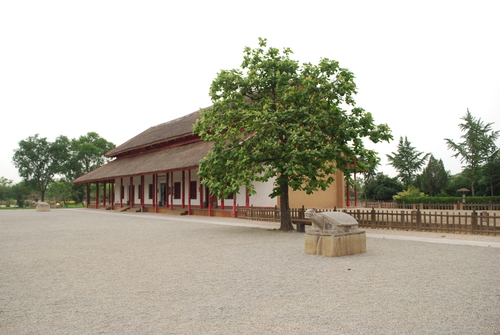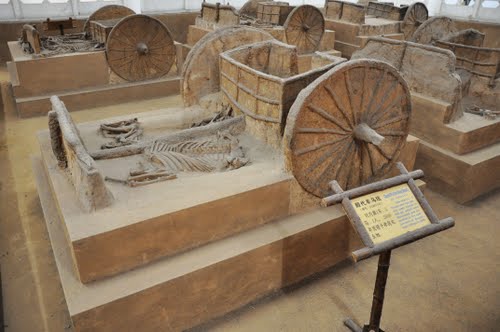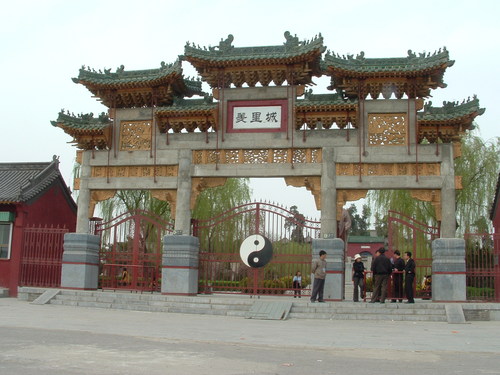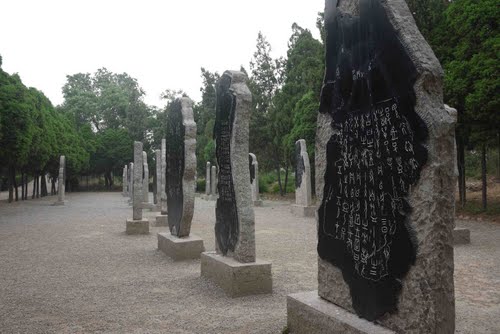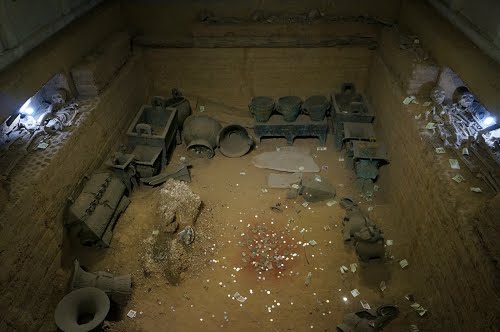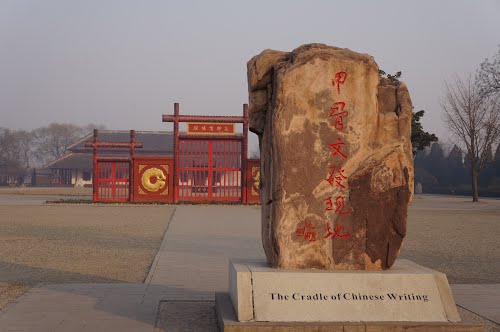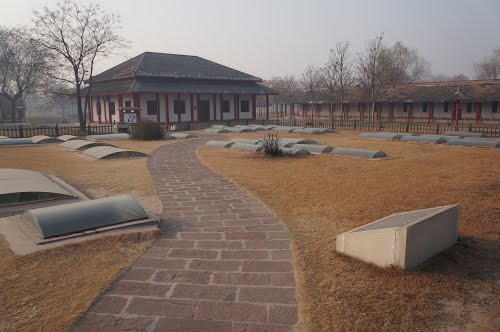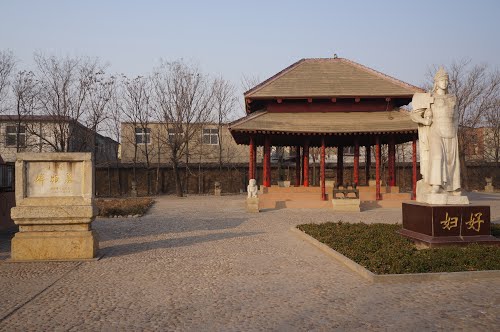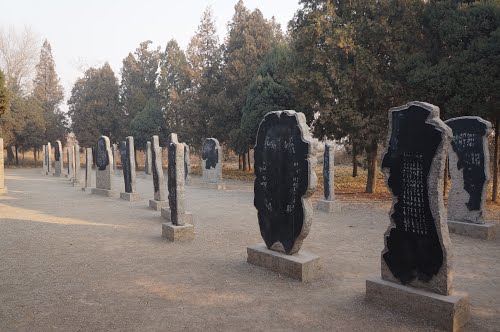Yinxu is the site of one of the ancient and major historical capitals of China. It is the source of the archeological discovery of oracle bones and oracle bone script, which resulted in the recognition of the earliest known Chinese writing. The archeological remnants known as Yinxu represent the ancient city of Yin, the last capital of China's Shang dynasty which existed through eight generations for 255 years, and through the reign of 12 kings. Yinxu was discovered, or rediscovered, in 1899, it is one of China's oldest and largest archeological sites, and is an UNESCO World Heritage Site. Yinxu is located in northernmost Henan province near the modern city of Anyang, and near the Hebei and Shanxi province borders. Public access to the site is permitted.
History
At the beginning of the 14th century BCE, King Pangeng of the Shang dynasty moved his capital from Yan, to the site of an old village which had existed since 5,000 BCE, upon the banks of the Huan River. The new city was named "Yin", and from that point on the dynasty that founded it would also be known as the Yin dynasty. The name "Yin" is an ancient term referring to "vibrant music-making".
King Wu Ding continued to use Yin as his capital and launched numerous military campaigns from this base against surrounding tribes thus securing Shang rule and raising the dynasty to its historical zenith. In ancient times Yin was also known as Beimeng or Yinyi while oracle bone inscriptions record its name as Dayìshang or Shangyi.
As social differences increased within the slave-owning society, later rulers became pleasure-seekers who took no interest in state affairs. King Zhou, the last of the Shang dynasty kings, is particularly remembered for his ruthlessness and debauchery. His increasingly autocratic laws alienated the nobility until King Wu of the Zhou dynasty was able to gain the support to rise up and overthrow the Shang.
The Zhou dynasty established their capital at Fenghao near modern-day Xi'an and Yin was abandoned to fall into ruin. These ruins were mentioned by Sima Qian, in his Records of the Grand Historian and described in some detail by Li Daoyuan in his Commentary to the River Classic published during the Southern and Northern Dynasties period (420-589 CE). Thereafter the once-great city of Yin was relegated to legend along with its founding dynasty until the final years of the Qing dynasty.

